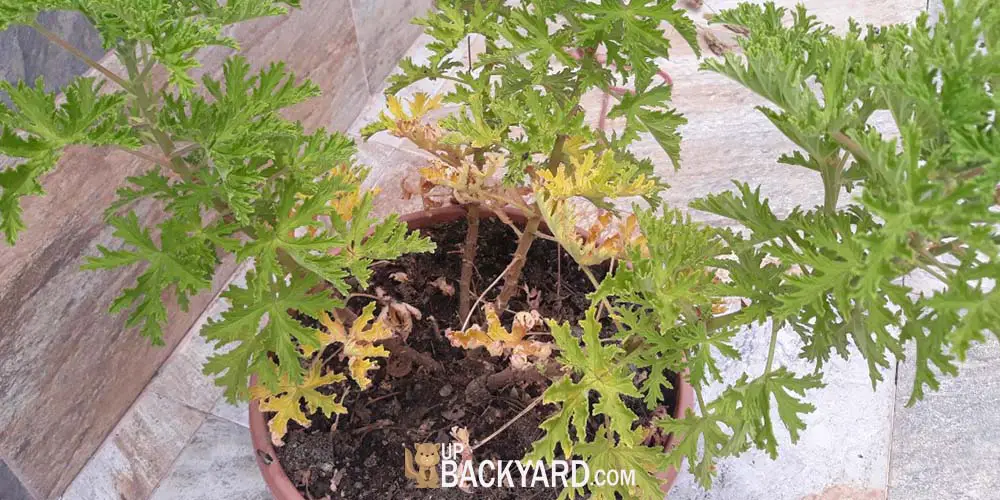Known for their iconic lemon scent and their ability to ward off mosquitoes, citronella plants are a fan favorite. They sport incredibly unique leaves that are velvety to the touch.
A simple breeze shaking their leaves gives off their wonderful aroma, and small purplish pink flowers can be found amongst the sea of green leaves during the summer season.
But what if the beautiful green leaves look more brown or yellow? You may be wondering, what is wrong with my plant? Why is my citronella plant dying?
There are a number of reasons your citronella plant could be dying. Overwatering is most likely the cause. If the plant has too much moisture in the soil, it can lead to root rot. Root rot will slowly kill the entire plant.
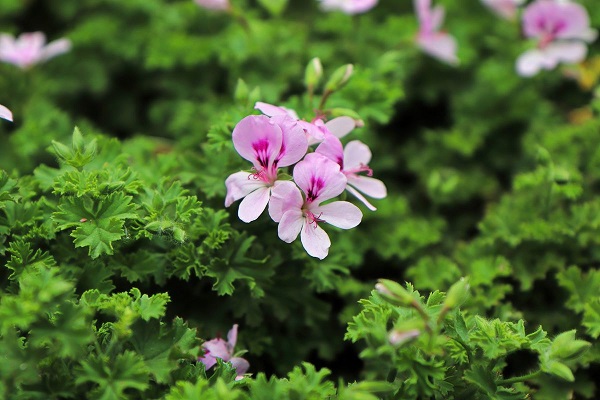
Read on to learn more about root rot and other possible causes of a distressed citronella plant.
Why Is My Citronella Plant Turning Yellow?
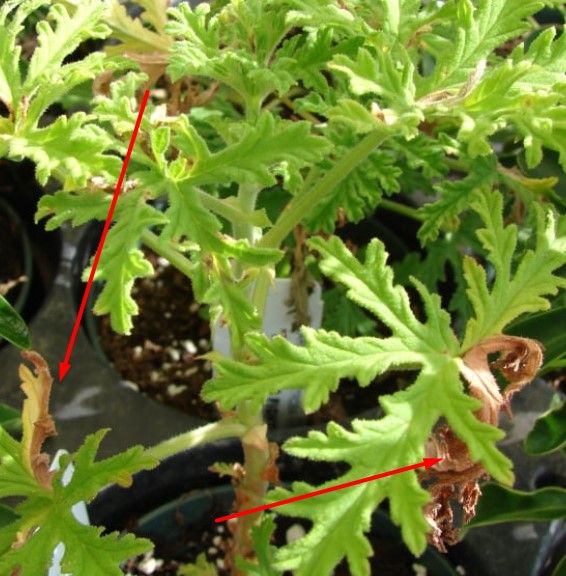
Like all plants, when a citronella plant turns yellow or brown, it is a call for help.
If you are proactive and can figure out the problem, you may be able to save the plant from dying completely.
Overwatering
The most common reason that your citronella plant is turning yellow is that it has received too much water.
This is more likely to happen to plants that are being grown in pots but can also happen to citronella plants that you are growing in the ground.
If the plant is in a pot and the soil seems overly moist, transfer the plant to fresh, dry soil as soon as possible.
Once the plant is safe and dry, adjust the amount of water the plant gets. Try to only water it once the top 2 inches of the soil are completely dry. You can check this by sticking your finger into the soil of the pot.
Drainage Issues
If you notice that the soil of your plant is overly wet, you most likely have a drainage issue.
Check that the pot has enough drainage holes on the bottom. These holes are essential in preventing root rot and allowing the plant to get rid of excess water and moisture.
If you notice the pot does not have enough holes, add some yourself or choose another pot that is a better fit.
Usually, plastic garden containers will be your best bet for proper drainage. The beautiful display pots, while appealing to look at, tend to not have the right amount of drainage holes.
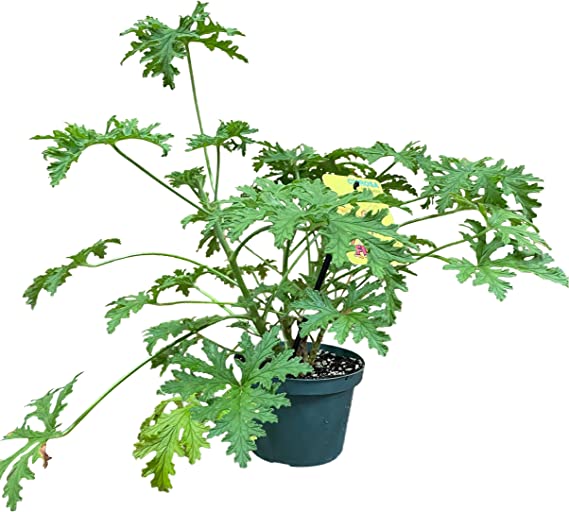
To fix this, plant the citronella in a garden pot and then place the entire pot in the decorative one.
If the soil is still retaining too much moisture, add a layer of gravel to the bottom. This will help keep the roots of the plant from sitting in water.
Lighting Issues
Plants need sunlight in order to perform photosynthesis.
Photosynthesis is the process in which plants take the sun’s energy and turn it into energy they can use. The part of the plant that is responsible for this is called chlorophyll. Chlorophyll is green in color.
Plants are green because of the amount of chlorophyll in their cells. If your plant is kept in darkness, the chlorophyll will not develop properly. This can also stunt the growth of the plant severely.
If you notice the leaves of your plant are yellow, move it into a sunnier spot. However, if the leaves look brown or crispy, move them away from direct sunlight. That is a sign of sunburn.
Low Humidity
When we think of mosquitoes, we think of summer. Summers are incredibly humid, which helps the citronella plant thrive.
This is great for those who use these lemon-scented plants to ward off the pesky mosquitoes from our outdoor spaces.
While it is unlikely to be a problem with outdoor citronella plants, low humidity can cause yellowing of the leaves.
If you are growing the plant indoors, try adding a small humidifier to the room or get a plant humidifier to place near it.
Low-Quality Soil & Fertilizer Shock
Plants get their nutrients from the soil they are planted in, which is why it is important to always use clean, fresh, high-quality garden soil.
If the soil is old and nutrient deficient, the plant can turn yellow and begin to die from nutrient loss.
In this case, you can feed the plant with an appropriate fertilizer. Be sure to read the instructions carefully and apply correctly. It is easy to overdose a plant on nutrients as well.
Applying too much or using the wrong kind of fertilizer can send the plant into shock before killing it. When the plant goes into shock, it will quickly turn yellow.
If you suspect that the plant is in shock, remove it from the soil immediately and rinse well.
Plant in fresh soil and avoid fertilizing for at least six weeks. While it is hard to save a plant from fertilizer shock, it is not impossible.
Root Bound
When the plant has outgrown its pot, it will begin to die. This is due to the roots being constricted and unable to gather the appropriate nutrients.
To check if your plant is root bound, look at the bottom of the pot. You will notice the roots beginning to grow out of the drainage holes as they search for more space.
When it is time to repot, grab a container that is at least 1-2 inches larger in diameter but not much more.
While being root bound is dangerous for plants, having too much space in the pot can also negatively affect them.
How Much Water Does a Citronella Plant Need?
When it comes to watering your plant, you need to understand how much water it needs to prevent overwatering. Using too much water can lead to root rot or even drown the plant.
Like humans, plants need more water when the weather is hot. In summers, they will need to be monitored more closely and often than in winters.
In fact, unless you are growing the plants indoors, they will not survive the winter months outdoors.
Check your plant by sticking your finger into the soil. Once the top 2 inches are dry, go ahead and water it thoroughly. It is best to water deep and allow the plant to dry out.
Avoid frequent shallow watering sessions as this can lead to shallow roots. It can also cause the plant to die since the deeper roots won’t be getting adequate water.
You might also like: How To Plant Hydrangea Seeds? (A Beginner’s Guide)
How Much Sunlight Does a Citronella Plant Need?
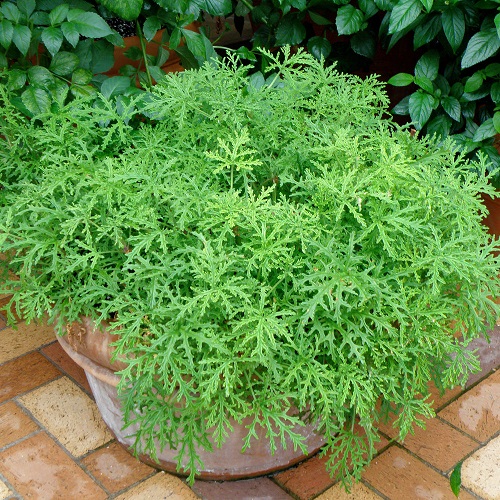
Citronella plants enjoy full sun. This means your plant should be getting around 6 hours of bright, indirect sunlight a day.
Avoid too much direct sunlight as this can cause stress for your plant and even burn the leaves.
When the cooler weather comes, it is time to bring your citronella plant indoors. It will not survive freezing temperatures.
If you live in a place that never dips below freezing, you can keep them outdoors, and they will grow again in the spring.
Do Citronella Plants Repel Mosquitoes?
Yes, citronella plants are known to repel mosquitoes, thanks to their lovely lemon smell.
While having just one plant may not do much, growing multiple plants will help keep your outdoor area pest free.
When the wind blows, or someone brushes against them, the leaves give off their scent. Running an outdoor fan near the plants helps increase the amount of smell in the air.
Final Thoughts
Citronella plants are essential for outdoor spaces in the summer. Not only are they pretty to look at, with bold green foliage and small purplish-pink flowers, but they also smell of citrus.
The lemony fragrance is not only a perfume for us to enjoy, but it deters mosquitoes and smells much better than other bug sprays.
They are also relatively low-maintenance plants, which makes it extra alarming when they begin to turn yellow. Early intervention is key to saving your plant from death when they start to lose its lush green coloring.
Citronella plants could be turning yellow for a variety of reasons, including too much water, lack of humidity, root bound, lack of drainage holes, soil quality, or fertilizer shock. Troubleshooting which issue it is requires some investigation.
Once you have discovered what the culprit likely is, you have to take action to protect the plant.
Usually, repotting in fresh soil with proper drainage holes is the first step. Keep in mind how much sunlight and water the plant needs, and you can create a healthy and happy citronella plant.
Even though just one plant can help ward off mosquitoes, it is best to grow multiple plants in outdoor spaces. Having an outdoor fan send a breeze through the citronella plants will send their fragrance into the air, deterring any mosquitoes. Nothing beats a natural bug repellent that also smells amazing.
Growing and maintaining citronella plants is easy and fun. Act early when the plant looks distressed, and you can have a happy and thriving plant for years to come.
